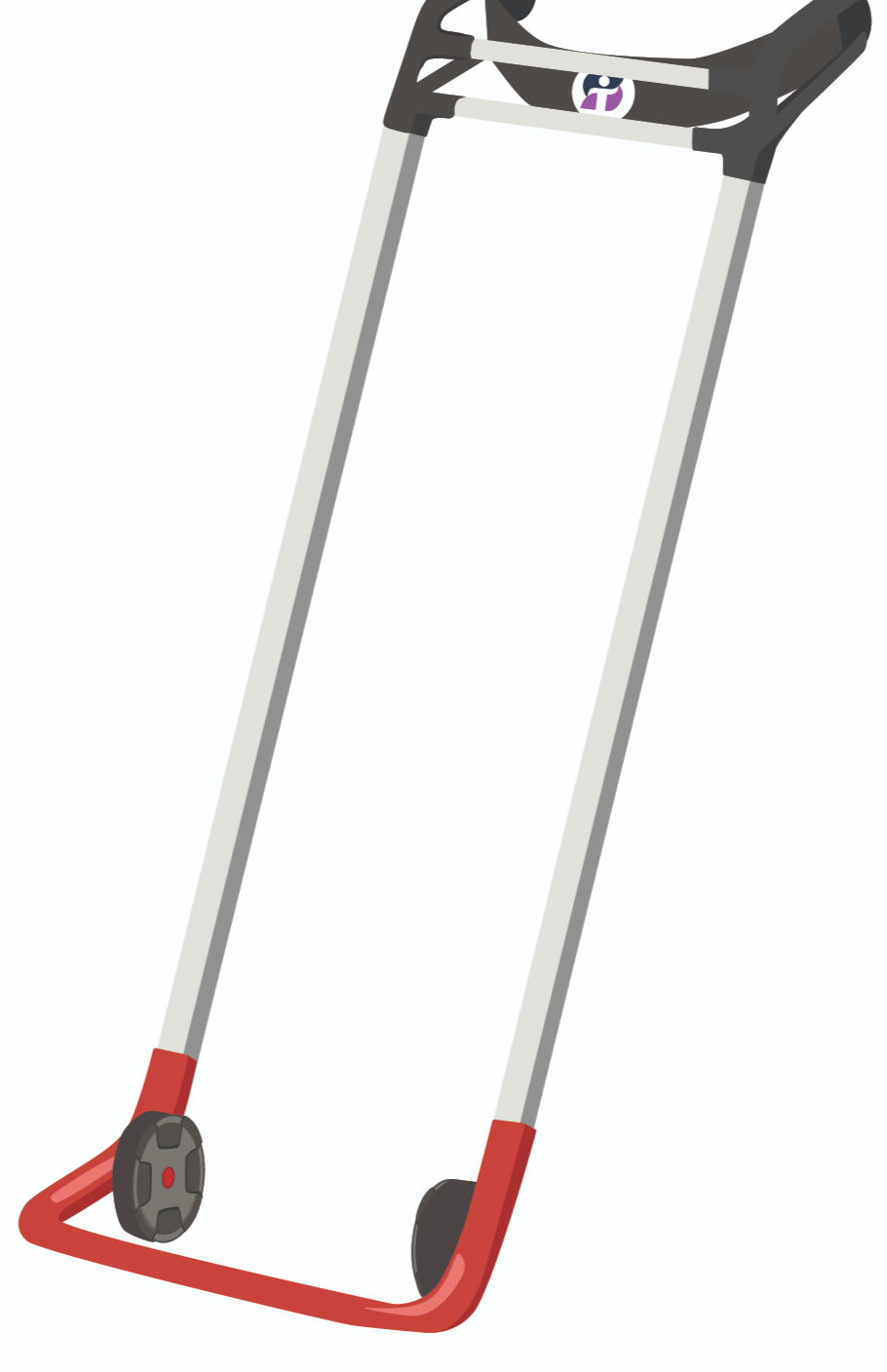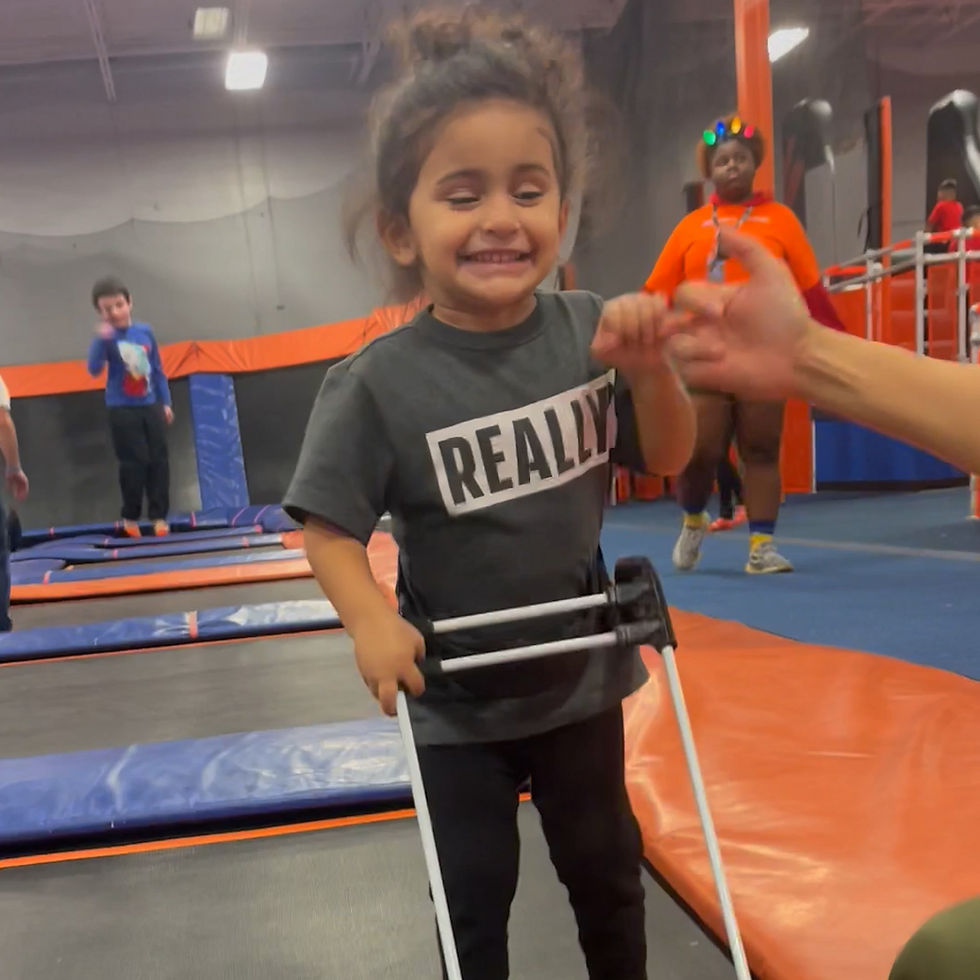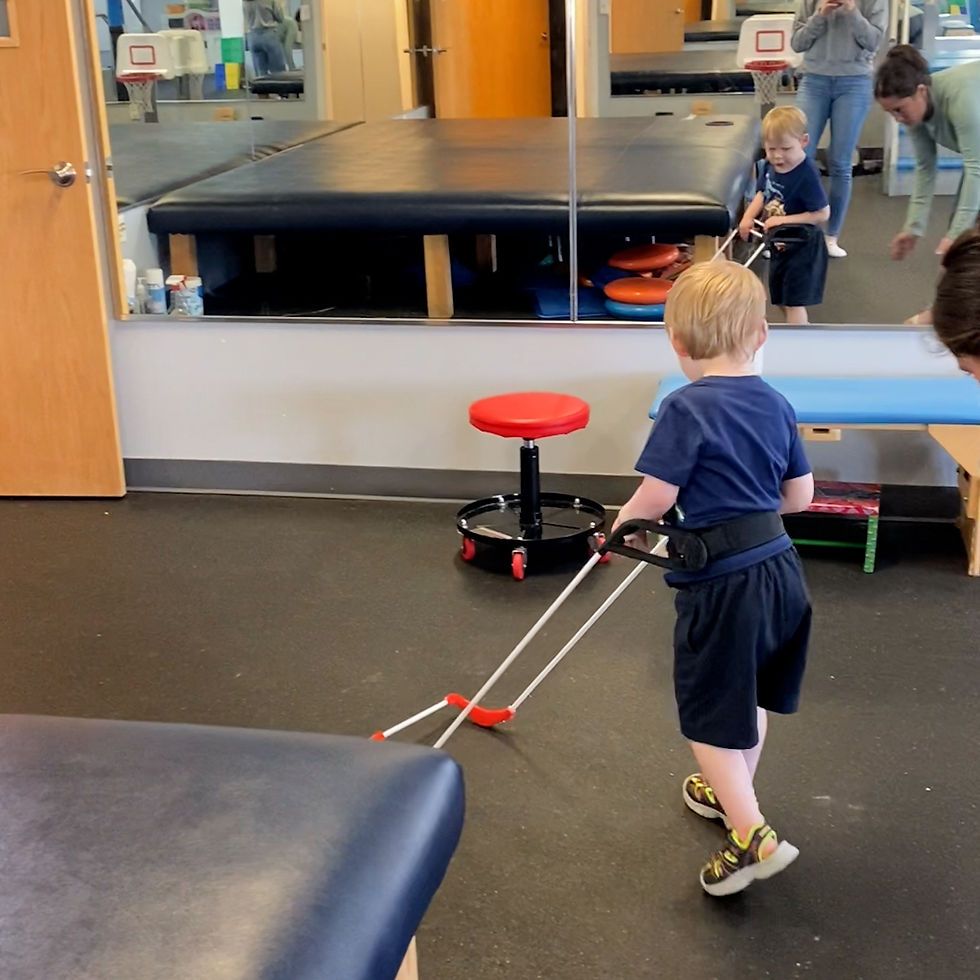🧭 It’s Not Orientation, It’s Mobility: A Thought Experiment for Parents of Blind Children
- Grace Ambrose-Zaken

- Sep 29
- 3 min read
As a parent of a young blind child, you may sometimes wonder how your child experiences space, how they navigate their environment, or why they seem hesitant to move freely — even when they know exactly where they are.
One of the biggest misconceptions is that blind children are disoriented or lost. In reality, they often know exactly where they are.
The real challenge is not orientation.
It’s mobility.
To understand this — and to build deeper empathy — try this simple but powerful thought experiment. All you need is a blindfold (or just closed eyes), a few minutes, and your own home.

🧠 Step One: Know Where You Are (Orientation)
Sit down somewhere in your home.
Close your eyes or put on a blindfold.
Ask yourself: Where am I?
Now, don't just rely on memory. Use your other senses — the same ones your child uses.
Ask yourself:
🔊 What do I hear? A fridge humming? A clock ticking?
👃 What do I smell? Coffee? Laundry detergent?
✋ What do my hands touch? A blanket? A countertop?
👣 What does the floor feel like? Hardwood? Carpet?
Without seeing anything, you’ve gathered a complete picture of where you are.👉 That’s orientation.
💡 Reminder: Blind children often do know where they are. They’re not lost — they’re just being cautious in how they move.
🚶 Step Two: Now Try to Move (Mobility)
With your eyes still closed:
👉 Plan a route to your favorite place in the house.It could be the kitchen, your bedroom, or the backyard.
Now consider:
Do I need to make any turns?
Are there steps or uneven surfaces?
Will I have to walk around furniture or clutter?
Could I bump into something if I’m not careful?
Even though you know where everything is, you’ll likely walk slowly, feel your way forward, maybe even hesitate.
Why?
Because you don’t know what’s right in front of you.
That’s mobility.

This Is Why the Pediatric Belt Cane Matters
The Pediatric Belt Cane is not just a rectangular stick — it's a powerful mobility tool. It's job is less helping with orientation (your child already knows where they are).
It helps most with movement.

The Pediatric Belt Cane provides:
⚠️ Two steps of warning about objects in your child’s path
🔍 Detection of stairs, curbs, or drops
↪️ Feedback about turns, obstacles, and floor textures
🧍 Confidence to walk upright instead of shuffling or feeling with hands
💡 The belt cane doesn’t tell them where they are — it tells them what’s in the way so they can move safely.
🧩 The Real Takeaway for Parents
Next time your child pauses or hesitates, don’t assume they’re confused.
Instead, remember this:
They know where they are — they just can’t see what’s in front of them.
That’s why mobility tools like the white cane are essential. They give your child the ability to move freely, safely, and independently.
✅ Support their orientation: Trust that they know.
✅ Support their mobility: Give them the right tools.
👣 Want to Try This Again?
Repeat this experiment at different times of day or in different rooms.
Try it barefoot vs. with shoes.
Try it with music on or windows open.
Try it somewhere new, like a friend’s house or hotel room.
Every change highlights how our senses adapt — and how blind children build their own spatial awareness every day.








Comments